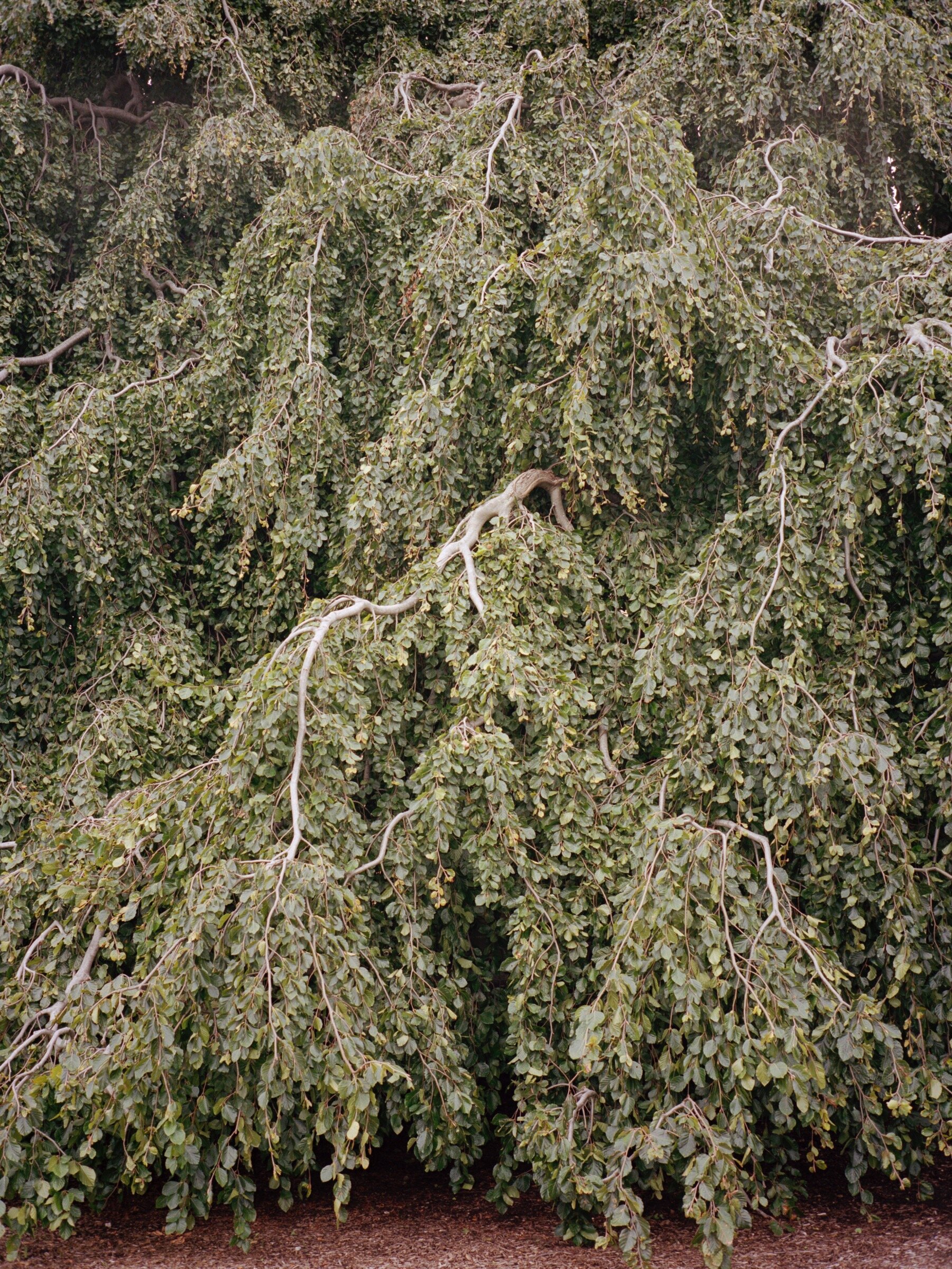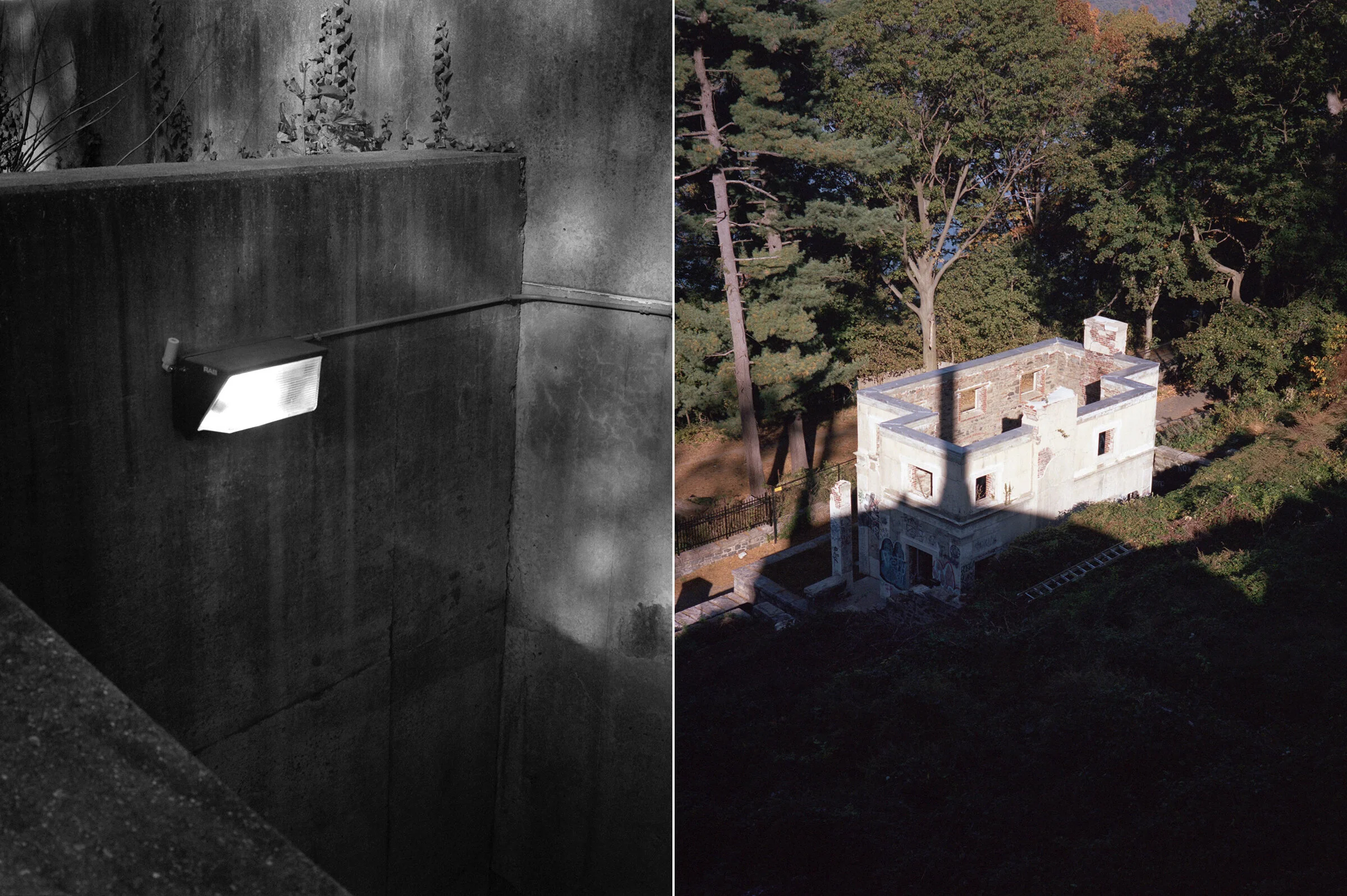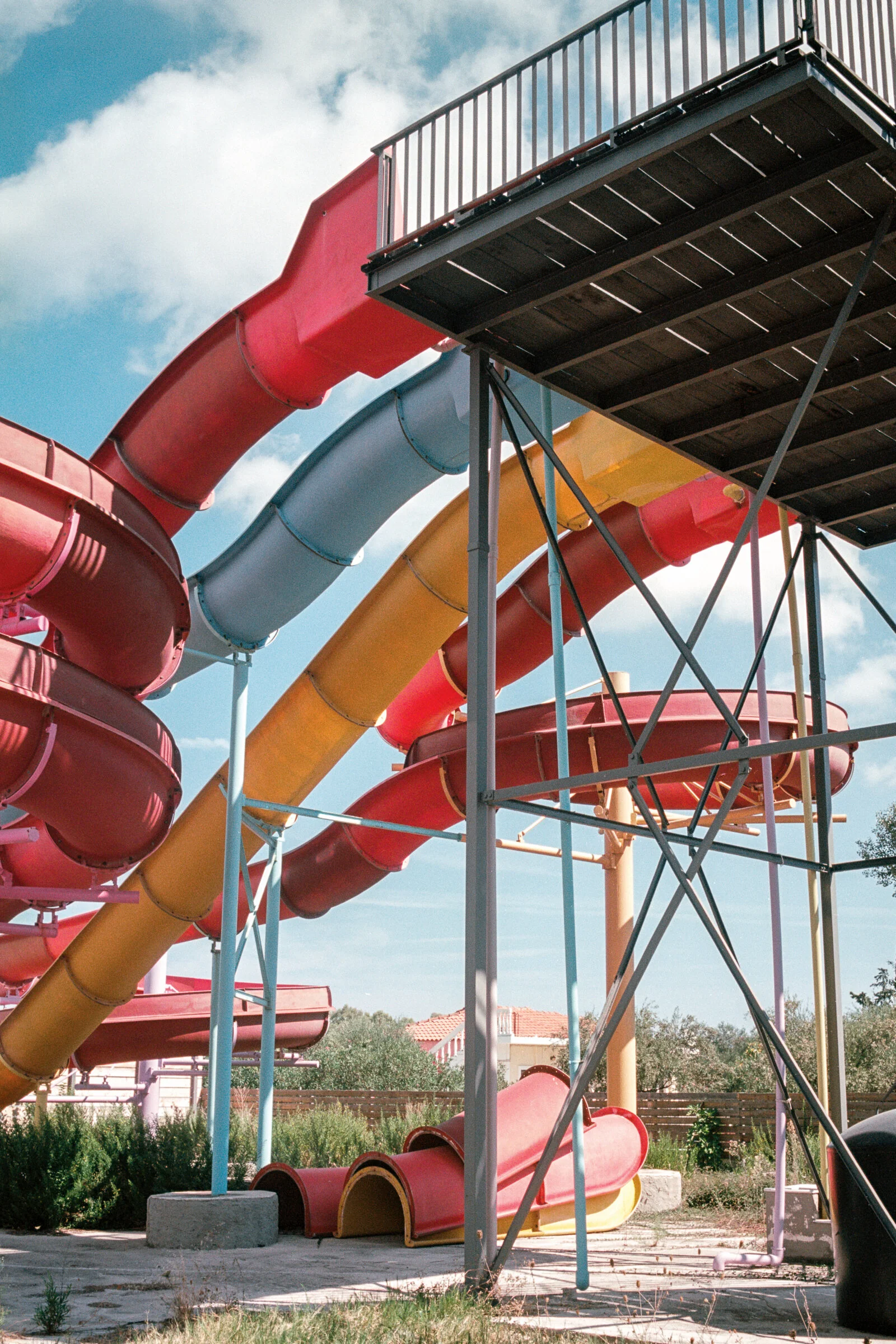Brackish River Valley: Eric Kaczmarczyk
PC: Eric Kaczmarczyk
Andrew D. McClees (ADM): For those who aren't familiar with you and your work, would you mind introducing yourself?
Eric Kaczmarczyk (EK): Hi, my name is Eric Kaczmarczyk, I'm an artist-photographer living and working in the Lower Hudson Valley region of New York State. My artwork is primarily made within the environment in which I live; whether it be a landscape, a cityscape, a still life, an abstraction, or the occasional portrait. Photography for me is a way to connect with my surroundings and ultimately, a way to process my own psychology. As I continue to explore, film photography has been my medium of choice, in part due to its slowness - developing, scanning, editing, printing -gives me time to sleep on it all.
ADM: We're talking about Brackish River Valley - you open with the words that make the title being defined, and have a brief afterword - could you expound on the concept and impetus for the project?
PC: Eric Kaczmarczyk
EK: The photographs I've made over the past several years were without a specific intention or end goal in mind. Before coming up with the final name for the book, I had the word "river" stuck in my head... and I kept thinking, what about river, why river. As I learned more about the area, I came to understand that the Hudson River is brackish; a mixture of salt and freshwater. When the ocean tide rises, the river flows northward; when the ocean tide falls it flows southward - at least in the lower part of the river. In the afterword, I mention that the "mayor was covering everything in concrete" as a way to acknowledge that there were several large scale construction projects going on around this time, erecting residential towers and complexes. Not everything was being covered, in fact, there was some uncovering. There used to be a large parking lot in the center of town which they removed and re-exposed part of the Saw Mill River that was buried underneath years ago. There was still little-to-no grass in the nearby parks, most everything was concrete with a few trees and some flowers.
ADM: I find the photos in Brackish River Valley to be very formally pleasing - is there a particular meaning or throughline in the photos? What was your process for image-making - and following that - you handmade/bound the project - is there extra significance to that handmade approach?
EK: Symbolically - the mixture of salty and fresh water, flowing two different directions, the struggle between concrete and nature and the conflict of old and new - were all on my mind while making this work. Not only did this help me understand the environment that I stepped into, but also helped me understand my internal dialogue. I used to be a very rigid creator, thinking of a concept then illustrating that concept. For me, this left me stuck behind the emotional walls that I've unintentionally built. Through making this work specifically, while undergoing a life transition of my own, I felt the impact of covering things in concrete. I think making this book by hand is relatable back to why I shoot film - it was a slow, intimate process, giving me a lot of time to gain clarity.
PC: Eric Kaczmarczyk
ADM: Are there any images that you would point to explain the project to an outsider, or that encapsulate the project best (from your perspective), and why or why not?
EK: I’d say, look at the pair of images where on the left is a light fixture and on the right is a building without a roof. This is one of my favorite uses of metaphor in the book where the light appears to illuminate the roofless building as a symbol for searching and introspection. Additionally, note the presence of a large shadow cast on the hillside, obscuring the view. Also, take a look at both the black-and-white image of the busy road and the color image of the parking garage with water in the foreground. Both of these images depict two examples of where the Saw Mill River was uncovered and parks lacking nature were built.
ADM: Recently, I saw you mention on IG that "Brackish River Valley has two more sequels coming next year, what are they about, and how does the book fit into that larger cycle?
PC: Eric Kaczmarczyk
EK: Yes! I have two more books planned, with different titles yet to be determined. This first book contains photographs from 2017 and 2018, all made within Yonkers which borders New York City to the north. The next book will contain photographs from 2019, all made between Yonkers and Sleepy Hollow, New York. During this time, I've transitioned to a new location further up the river. And finally, the third book will be photographs from 2020, all made within Tarrytown and Sleepy Hollow. Generally, the further north you go from New York City, the greener the landscape becomes. This may sound obvious to some, but for me, as I break down my emotional barriers, nature has played a major role.
ADM: Do you have a greater overall goal for the cycle of photobooks? does it have a name?
EK: Ever since I relocated to the Lower Hudson Valley several years ago, I’ve been fascinated by the river and the rivertowns. Not pictured in this first book, another geographic feature that caught my attention is the Old Croton Aqueduct which is now a hiking trail spanning 26 miles, running parallel to the river. Previously, the aqueduct provided fresh upstate water to New York City. Aside from the river being a mode of transportation for water and boats, it felt like a place to meditate, transporting thoughts. My overall goal is to document this transportation of thoughts while connecting with the physical environment. There is no name for the overall project yet.
ADM: In terms of influence, what were the major influences on Brackish River Valley, and the cycle at large? they can be photographic, or non-photographic.
EK: Several artists that come to mind are Sophie Calle, Laurie Anderson, Pipilloti Rist and Sol LeWitt. Aside from artist inspiration, one major influence on Brackish River Valley has been weekly talk therapy with a psychologist. I’ve always been an intuitive artist but, through depression and anxiety, this has helped me connect with my photographs in a more direct and conscious way. Another major influence goes back about 10 years, a college professor of mine who encouraged me to go out and make photographs without thinking or planning beforehand. This helped me ward off overthinking and make more room for reflection.
PC: Eric Kaczmarczyk
ADM: You've mentioned therapy and mental health - lately I've found a lot of photographers (myself included) use the medium as an outlet for their personal struggles - in your own words, or opinion, what is it about the medium that makes it so intuitive to the topic of mental health or illness?
EK: For me, one thing about photography that makes it such an intuitive medium is within the ephemeral nature of pressing the shutter button. Personally, in regards to my mental health, my ability to process emotions in the moment can be quite difficult, it takes me a while. If I make work with this in mind, and relinquish some control, this leaves a lot of room for the subconscious to do its work. Letting my mind wander and letting my intuition tell me what to make a picture of. In this state of mind, I feel that it's easier to simultaneously experience the moment and also make the picture, processing the emotions later on.
ADM: What does the Photobook format mean to you, and do you find it to be substantially different from the zine?
EK: I always found photobooks to be a great way to hold art in your hands and feel what the artist might’ve been feeling. Truthfully, I wasn’t fully certain whether to call this project a photobook, a zine or a chapbook… to me, it’s a type of hybrid between a photobook and a zine. I did want an intimate smaller book, and in a several book series, like a zine. I don’t find the various formats to be substantially different; they are all books and serve the same purpose of communicating artistic expression.
PC: Eric Kaczmarczyk
ADM: What advice or insight would you give to someone looking to contextualize their mental health or findings in therapy through photography?
EK: My best advice would be to not restrict yourself into one style, one theme, one type of photography. Having gone to art school, often, I felt that you can be pushed into overly developing a style in order to fit into a niche within the industry. In regards to mental health, and art, this can be quite suppressive. If you’re only photographing one subject matter, in one way, it will not be possible to access the far reaching complexities of one’s psychology. My second piece of advice would be to never stop asking questions to yourself; reflect, analyze the symbols, analyze the colors. Unrelated to my book, in college, I made gross food combinations, placed them on the sidewalk, asked four people to stand around, then photograph the scene from the knees down. About 10 years later, I realized it was a sort of rebellion to the superficial environment I was raised in, where food and appearance were the most important thing, more important than feelings.
ADM: From Al Palmer: What was the biggest single turning point for you as an artist?
EK: At first thought, I began to scan my recent achievements, my technical upgrades, my emotional freedom… even with some of this feeling like they’re big steps, it still feels more like a long term progression. Therefore, I’d have to say, the biggest turning point for me is not recent; it was as a teenager, the purchase of my first camera. It was my first major coping tool. I was able to navigate my world, soothing anxieties, the usual “hiding behind the camera” perspective. I tried expressing myself through drawing and painting but, I felt more clarity while looking through a lens. Personally, this is the most important to me because I discovered that I could communicate in ways that I could not with words.
PC: Eric Kaczmarczyk
ADM: What question do you have for the next photographer? You can answer it yourself if you'd like.
EK: What does a day in the life as a photographer, as an artist, as a person, look like for you? What time do you wake up, go to sleep? Outside of photography, what are some of your favorite hobbies?
ADM: Where can people purchase a copy of Brackish River Valley? I saw that you'd sold through your initial batch (congratulations!) will you have another pressing for sale alongside the next books in the cycle? Do you have any other parting words? -- Thanks again for the interview!
EK: Fortunately and unfortunately, the book is sold out! The next books in the cycle will be a continuation of similar subject and format and a good chance to pick up a copy. At the end of the cycle, I am hoping to put the several books together into one larger, hardcover book… but we will see! In the future, I may consider a second edition, but will not be handmade like the first edition. Lastly, for those who liked the book, or who missed the book, I am releasing a batch of images from the book as special edition prints that will be going up for sale soon. My only other parting words are a big thank you to frozenwaste.land for offering to interview me and to all my friends and colleagues who’ve shown invaluable support throughout this process.



























